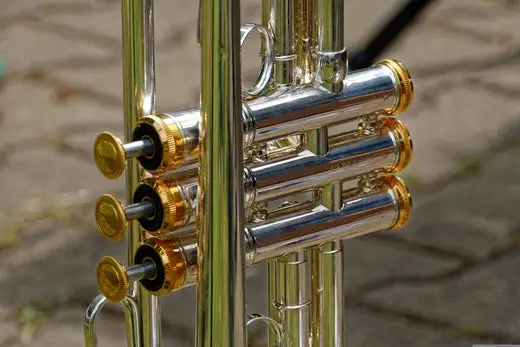Advantages of Starting Young Trumpet Students on Cornet
Introducing young students to brass instruments requires careful consideration to ensure a positive experience on their fresh, musical journey. Deciding to start young trumpet students on the cornet, rather than the trumpet, presents several advantages with minimal drawbacks.
While the trumpet and cornet share the same length of tubing, their main distinction lies in their respective shapes. The cornet features a more compact and conical shape, while the trumpet exhibits an elongated cylindrical form. Understanding the differences between conical and cylindrical shapes is crucial.
The conical shape of the cornet entails a gradual widening from the mouthpiece to the bell, resembling an ice-cream cone. This shape promotes a more focused and mellow sound, offering better control over intonation and enhanced responsiveness for softer dynamics. Conical instruments, including the cornet, are renowned for their warm and rich sound.
On the other hand, cylindrical shapes maintain a consistent diameter throughout the length of the instrument. This shape enables a brighter and more powerful sound, lending versatility and the ability to produce a wide range of dynamic and expressive sound to cylindrical instruments like the trumpet.
Selecting between conical (Cornet) and cylindrical (Trumpet) instruments depends on the desired sound and playing style. Conical shapes generally provide a more lyrical and expressive quality, while cylindrical shapes deliver a more brilliant and projecting sound.
One of the primary advantages of starting young trumpet students on the cornet is the improved tone production it offers. The cornet’s conical bore and mellower sound provide a gentle introduction to brass playing. Its smaller bore diameter encourages students to focus on embouchure, breath control, and technique, establishing a solid foundation for future trumpet playing.
The conical shape of the cornet’s bore contributes to improved tone production in several ways. Firstly, the gradual widening of the bore from mouthpiece to bell allows for a more focused and centered sound. This means that the vibrations produced by the player’s lips are channeled, focused, and concentrated, resulting in a more centered and mellow tone.
Additionally, the conical shape facilitates better control of intonation. As the diameter of the bore gradually increases, it helps to balance the harmonics and overtones produced by the instrument, leading to more accurate and in-tune playing, particularly in the lower register. Lastly, the conical shape provides enhanced responsiveness at softer dynamics. The gradual tapering of the bore allows for a quicker and more controlled response when playing at lower volumes. This is particularly useful in melodic and lyrical passages where a gentle and expressive tone is desired.
Overall, the conical shape of the cornet contributes to a warm, rich, and expressive sound, making it an excellent choice for beginners and those seeking a mellower tone.
Another advantage of starting young trumpet students on the cornet is the better weight and balance it offers. The cornet’s compact and balanced design allows for easier and more comfortable playing. Its smaller size and lighter weight reduce strain and fatigue, enabling students to concentrate on developing embouchure, maintaining proper hand position, finger technique, and overall musicality. These attributes also make it more manageable for students who are smaller or have a delicate physical build. In contrast, the weight of a trumpet tends to be heavier at the bell, which can contribute to more tension in the wrists, especially for beginners. With the cornet, the weight of the instrument tends to be distributed and balanced towards the backside, near the shepherd crook in the bell and mouthpiece, resulting in a more balanced and ergonomic playing experience.
Furthermore, the cornet’s bell, positioned closer to the student’s ears, enhances sound perception and clarity. Being in close proximity to the instrument allows young learners to hear their sound development more clearly, providing immediate feedback on tone, pitch, and intonation. This improved auditory understanding leads to quicker progress and higher levels of musical expression.
Moreover, starting on the cornet cultivates a heightened sensitivity to sound. Students learn to listen attentively to their own playing, developing a discerning ear for intonation, tone quality, and musical expression. This keen sense of sound awareness enhances their ability to play in tune and blend effectively with other musicians, fostering a well-rounded and accomplished musician.
Starting on the cornet offers a seamless transition to the trumpet. Skills and techniques acquired on the cornet effortlessly transfer to the trumpet. Students with a solid foundation in tone production, technique, and musical interpretation experience a smoother transition, minimizing frustration when learning a new instrument. This continuity allows them to focus on refining their skills rather than starting from scratch, thereby accelerating their progress.
Beyond the musical benefits, starting on the cornet builds confidence in young trumpet students. As they develop their skills on a more manageable instrument, they gain a sense of accomplishment and self-assurance. This confidence carries over to their trumpet playing, enabling them to tackle more challenging musical passages and perform with greater ease.
It is worth noting that the only true disadvantage to starting on the cornet arises when only one student in a beginner class begins on the cornet. In such cases, it is essential for the teacher to explain during the first class that there is no significant difference between starting on the cornet versus the trumpet. The teacher must address any concerns or questions from the other students regarding the cornet player(s) in the class, providing accurate and comprehensive information about both instruments. The goal is to create an inclusive and cohesive group dynamic, ensuring that the student on the cornet does not feel singled out or left behind.
In closing, starting young trumpet students on the cornet offers numerous advantages that significantly impact their musical development. The improved tone production, better weight and balance, seamless transition to the trumpet, enhanced sound development, and heightened sensitivity to sound are just a few of the benefits. Moreover, starting on the cornet builds valuable skills, fosters confidence, and cultivates a lifelong passion for music. The cornet serves as an ideal and practical starting point, setting young student musicians on a path of excellence and fulfillment in the world of music.







